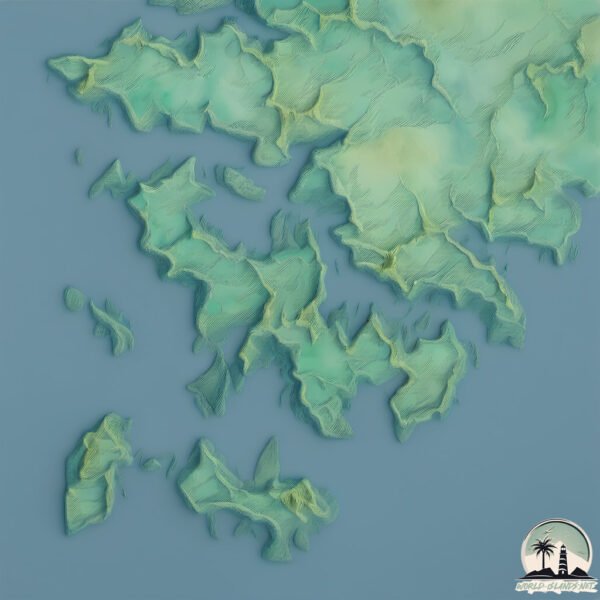Welcome to Kakeromajima , a Temperate island in the Eastern China Sea, part of the majestic Pacific Ocean. This guide offers a comprehensive overview of what makes Kakeromajima unique – from its geography and climate to its population, infrastructure, and beyond. Dive into the details:
Geography and size of Kakeromajima
Size: 77.6 km²Coastline: 141.5 kmOcean: Pacific OceanSea: Eastern China SeaContinent: Asia
Kakeromajima is a Medium Island spanning 78 km² with a coastline of 141 km.
Archipel: Ryukyu Islands – A chain of Japanese islands stretching southwest from Kyushu to Taiwan, known for their unique Okinawan culture and subtropical climate.
Tectonic Plate: Yangtze – A minor tectonic plate in East Asia, often considered a part of the Eurasian Plate. It’s primarily continental and covers the Yangtze River area in China, playing a significant role in the region’s geological stability.
The geographic heart of the island is pinpointed at these coordinates:
Climate and weather of Kakeromajima
Climate Zone: TemperateClimate Details: Humid Subtropical ClimateTemperature: Hot Summer
Climate Characteristics: With continuous rainfall and hot summers, this climate is common in some coastal regions, supporting diverse vegetation.
Topography and nature of Kakeromajima
Timezone: UTC+09:00Timezone places: Asia/TokyoMax. Elevation: 236 m Mean Elevation: 95 mVegetation: Evergreen Broadleaf ForestTree Coverage: 85%
The mean elevation is 95 m. The highest elevation on the island reaches approximately 236 meters above sea level. The island is characterized by Hills: Gently sloping landforms with rounded tops, having a maximum elevation between 200 and 500 meters. Hills contribute to a varied landscape on islands.
Dominating Vegetation: Evergreen Broadleaf Forest
Vegetation: 6 vegetation zones – Very Highly Diverse Island
Infrastructure and Travelling to Kakeromajima
Does the island have a public airport? no .
Does the island have a major port? no .
The mean population of Kakeromajima is 38 per km². Kakeromajima is Gently Populated. The island belongs to Japan .
Continuing your journey, Uke Shima is the next notable island, situated merely km away.
加計呂麻島 / Kakeromajima Island, Japan(ドローン空撮 4K)
ガジュマルの木には神さまが宿ると言いますが、武名のガジュマルを見たとき、ホントにそうかもしれないと思いました。加計呂 ...
加計呂麻島 / Kakeromajima Island, Japan(ドローン空撮 4K)
ガジュマルの木には神さまが宿ると言いますが、武名のガジュマルを見たとき、ホントにそうかもしれないと思いました。加計呂 ...
ガジュマルの木には神さまが宿ると言いますが、武名のガジュマルを見たとき、ホントにそうかもしれないと思いました。加計呂 ...
【Japan island】Saneku Beach on Kakeromajima【snorkeling】
There is an island called Kakeromajima in the southwest of Japan. The ...
There is an island called Kakeromajima in the southwest of Japan. The sea on the island is beautiful, and the Saneku beach is a ...
[kakeromajima]Beautiful island ,Japan
Kakeromajima is an island located in the south of Japan. The island is ...
Kakeromajima is an island located in the south of Japan. The island is so beautiful. I want to visit again and again! #japantravel ...
Japan is classified as Developed region: G7: Group of Seven – Major advanced economies, including Canada, France, Germany, Italy, Japan, the United Kingdom, and the United States. The level of income is High income: OECD.
News – Latest Updates and Headlines from Kakeromajima
Stay informed with the most recent news and important headlines from Kakeromajima. Here’s a roundup of the latest developments.
Loading...
Please note: The data used here has been primarily extracted from satellite readings. Deviations from exact values may occur, particularly regarding the height of elevations and population density. Land area and coastline measurements refer to average values at mean high tide.

